Flemish painter Jan van Eyck (1380-1441) was one of the most famous Renaissance artists in Northern Europe in the 15th century.
He worked the latter part of his life in Bruges where he was the court painter of the Duke of Burgundy, Philip the Good.
Apart from his work for the Duke, who held him in extremely high regard, he also accepted multiple commissions for portraits and various other paintings which often consisted of polyptych panels.
In this post, you’ll discover some of the most famous Jan van Eyck paintings, an Early Netherlandish painter who left behind a legacy that includes some of the most famous paintings in European history!
1. Ghent Altarpiece
- Date created: 1425-1432
- Dimensions: 3.5 x 4.6 meters (11.48 x 15.09 feet)
- Location: St. Bavo’s Cathedral, Ghent, Belgium
The Ghent Altarpiece is a painting that consists of multiple panels and is considered to be one of the ultimate masterpieces in the history of art.
It was painted by both Jan and his brother Hubert van Eyck and was commissioned by the Mayor of Ghent. The painting marks an important transition from glorifying Medieval art to the exact natural observation of the Renaissance.

2. Arnolfini Portrait
- Date created: 1434
- Dimensions: 82 x 60 centimeters (2.69 x 1.96 feet)
- Location: National Gallery, London, United Kingdom
The Arnolfini Portrait, a painting also known as “The Arnolfini Marriage” or “The Portrait of Giovanni Arnolfini and his Wife,” depicts rich Italian merchant Giovanni di Nicolao Arnolfini and his wife, probably in their residence in the Belgian city of Bruges where van Eyck lived.
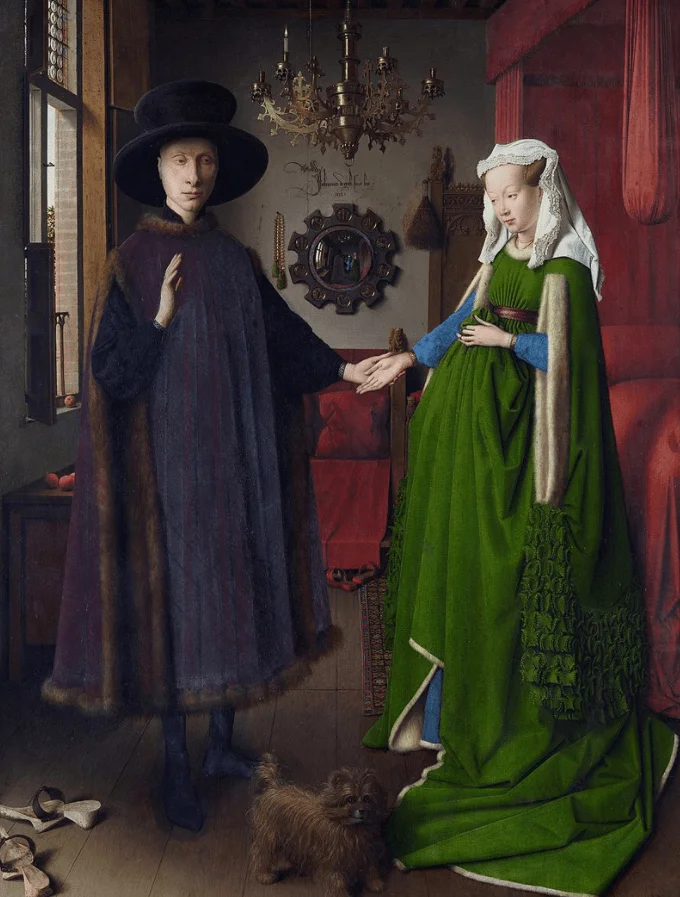
It’s considered to be one of the most famous paintings in Western art because of its complexity and originality and its true meaning has been debated for numerous centuries.
3. Dresden Triptych
- Date created: 1437
- Dimensions: 33.1 × 27.5 centimeters (1.08 x 0.90 feet) middle panel / 33.1 × 13.6 (1.08 x 0.44 feet) side panels
- Location: Gemäldegalerie Alte Meister, Dresden, Germany
The Dresden Triptych, also known as the “Triptych of the Virgin and Child,” is a relatively small painting consisting of 3 sections and 5 panels of which 2 can only be seen when the outer panels are closed.

It’s one of the most famous Jan van Eyck paintings because it’s the only triptych painting still in its original shape and the only non-portrait that van Eyck signed with his motto “ALC IXH XAN (“I Do as I Can”).

4. Annunciation
- Date created: 1434-1436
- Dimensions: 93 x 37 centimeters (3.05 x 1.21 feet)
- Location: National Gallery of Art, Washington D.C., United States
The Annunciation is believed to have been part of a triptych painting of which this painting was the left panel. It’s unclear what happened to the other 2 panels if this is the case.
It depicts the Annunciation by the Archangel Gabriel who tells the Virgin Mary that she will give birth to the Son of God. It’s again a very complex painting and the meaning of a lot of the iconography is still debated by art historians.
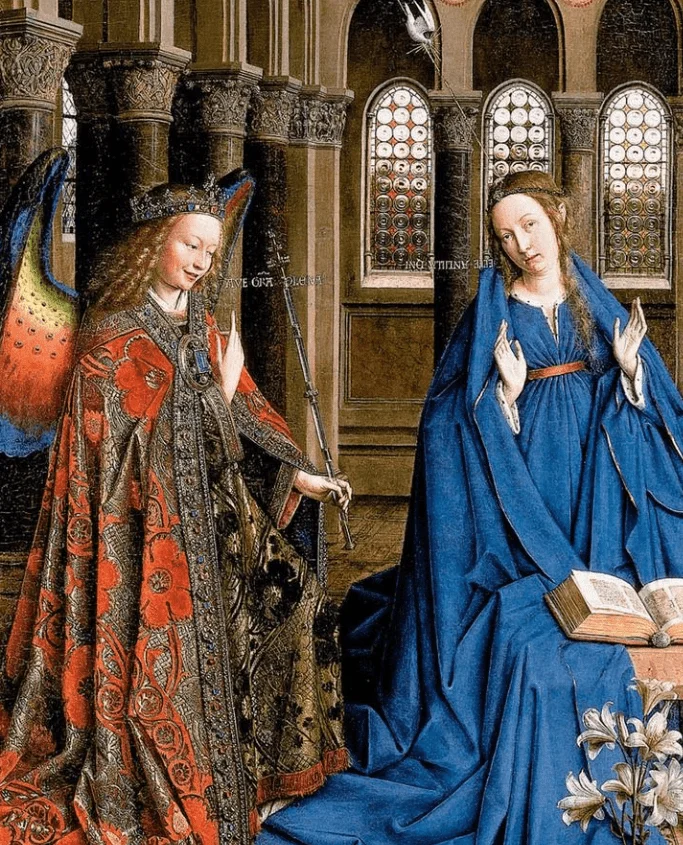
5. Madonna of Chancellor Rolin
- Date created: 1435
- Dimensions: 66 x 62 centimeters (2.16 x 2.03 feet)
- Location: Louvre Museum, Paris, France
The Madonna of Chancellor Rolin depicts Nicolas Rolin, the chancellor of Philip the Good and an important figure in the history of Burgundy and France, with the Virgin Mary when he was about 60 years of age.
The level of detail that van Eyck used in this painting is absolutely astounding considering its relatively small size. It has been part of the collection of the Louvre since the year 1805 after being moved there from Autun Cathedral.
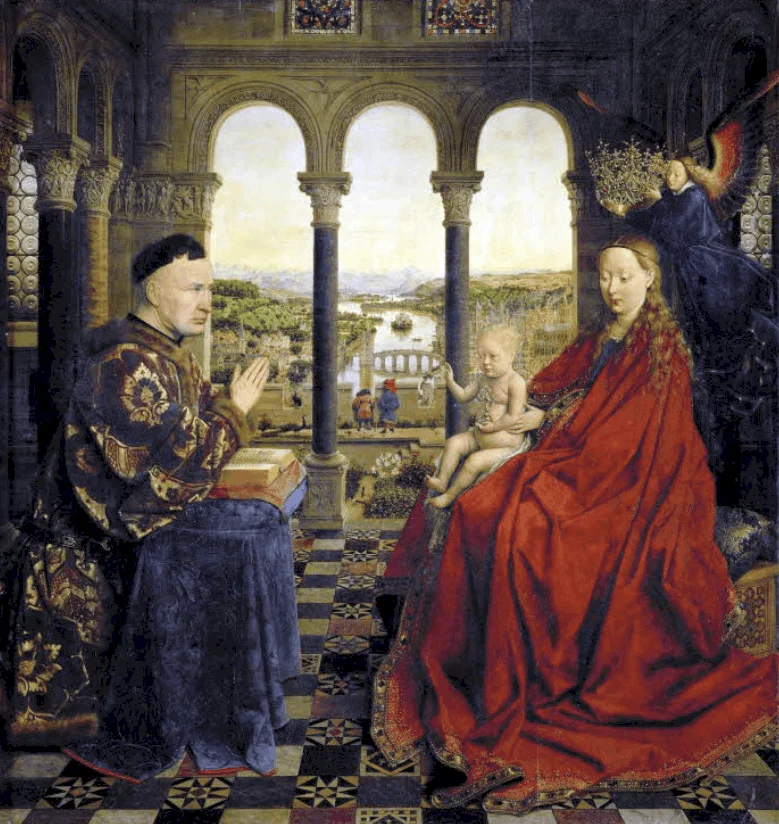
6. Portrait of a Man with a Blue Chaperon
- Date created: 1430
- Dimensions: 22.5 × 16.6 centimeters (8.9 × 6.5 inches)
- Location: Brukenthal National Museum, Sibiu, Romania
The Portrait of a Man with a Blue Chaperon depicts an unidentified man wearing a blue hood. It’s one of the most famous Jan van Eyck paintings because it’s the first portrait that is attributed to the Flemish master.
The man is holding a ring, something that was originally believed to reflect the profession of the man as a jeweler but is now considered to be a sign of engagement. It was brought to Romania by the Habsburg governor of Transylvania Samuel von Brukenthal (1721-1803) and is still in the country today.
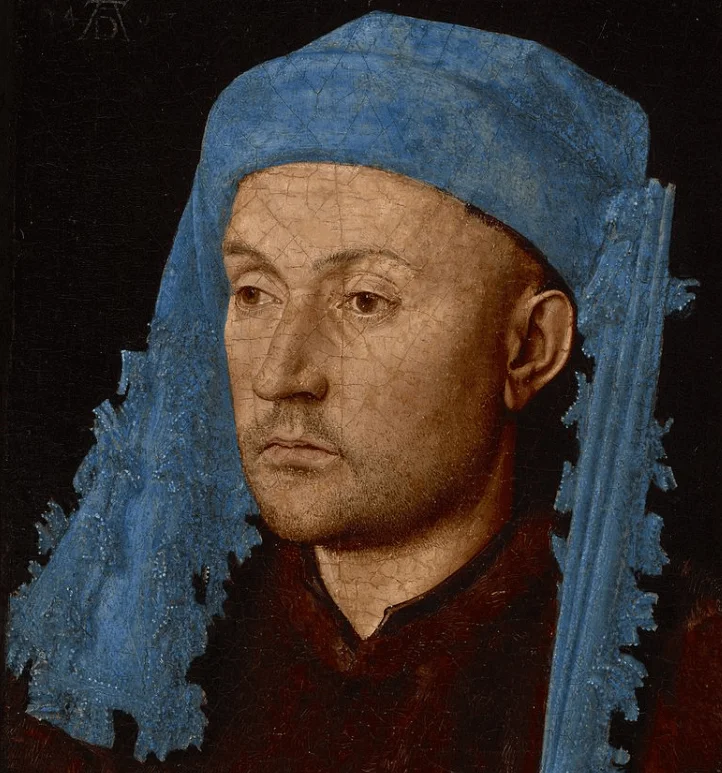
7. Virgin and Child with Canon van der Paele
- Date created: 1434-1436
- Dimensions: 122 x 157 centimeters (4 x 5.15 feet)
- Location: Groeningemuseum, Bruges, Belgium
The Virgin and Child with Canon van der Paele painting is one of the larger paintings by Jan van Eyck and it depicts the donor of the painting named Joris van der Paele as he experiences an apparition of saints along with the Virgin Mary and child.
The saints have been identified as St. Donatian, who stands to Mary’s right, and Saint George who stands to her left. The work was commissioned to serve as van der Paele’s memorial as he was seriously ill at the time it was created.
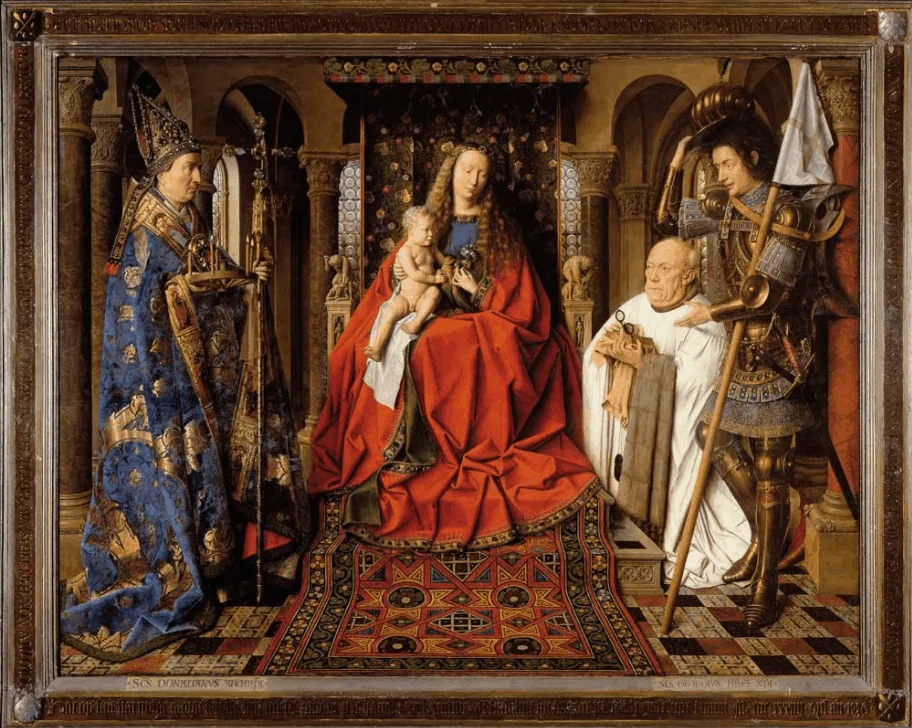
8. Portrait of a Man
- Date created: 1433
- Dimensions: 25.5 × 19 centimeters (10.03 x 7.48 inches)
- Location: National Gallery, London, United Kingdom
The Portrait of a Man also referred to as “Portrait of a Man in a Chaperon” or “Portrait of a Man in a Red Chaperon,” is assumed to be a self-portrait of Jan van Eyck.
It contains his famous signature, which reads “Als Ich Kan,” and is unusually larger than in any of his other works. This in combination with the fact that the man gazes in a confrontational way makes art historians assume he painted himself.
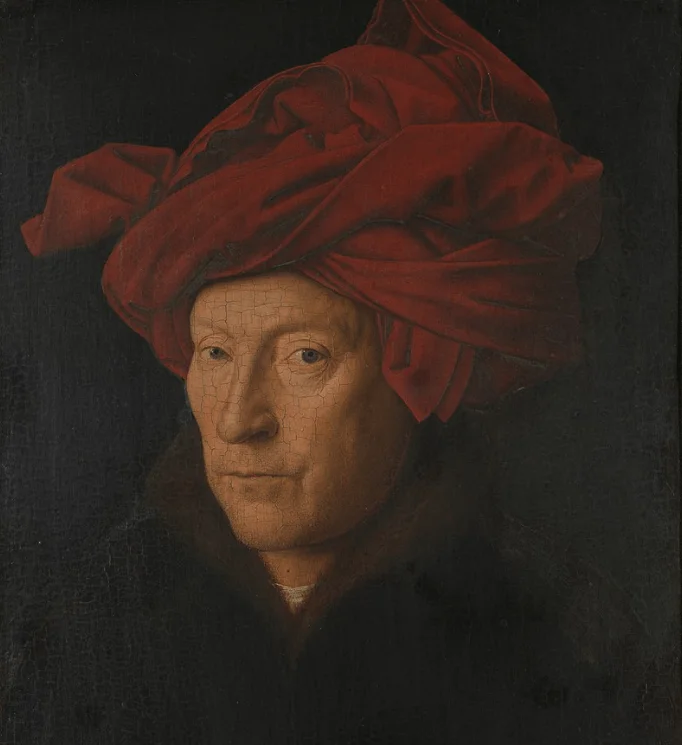
9. Portrait of Margaret van Eyck
- Date created: 1439
- Dimensions: 41.2 x 34.6 centimeters (16.22 x 13.62 inches)
- Location: Groeningemuseum, Bruges, Belgium
The Portrait of Margaret van Eyck depicts the wife of the painter and is one of his final paintings. It’s assumed that both his own self-portrait and this portrait originally formed a diptych painting (2 panels).
This also strengthens the theory that the Portrait of a Man is indeed Jan van Eyck. The work was created just 2 years before van Eyck passed away in the year 1441 and it’s signed with the words “My husband Johannes completed me in the year 1439 on 17 June, at the age of 33.”
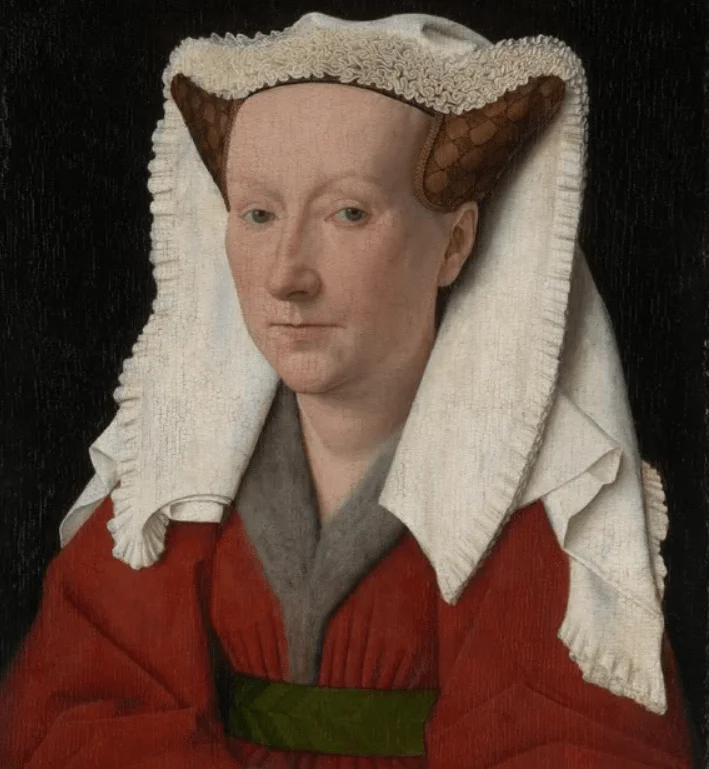
10. Madonna at the Fountain
- Date created: 1439
- Dimensions: 19 x 12 centimeters (7.5 x 4.75 inches)
- Location: Koninklijk Museum voor Schone Kunsten, Antwerp, Belgium
The Madonna at the Fountain is one of the final dated Jan van Eyck paintings and is one of his smallest as well. it’s still in its original frame which contains his signature that reads “ALS IXH CAN”, “JOHES DE EYCK ME FECIT + [COM]PLEVIT ANNO 1439.”
The Madonna is depicted in a blue robe, which is in contrast with the red depictions of his earlier works. This is seen as an Italian influence because Italian painters used ultramarine for the robes of Madonnas.
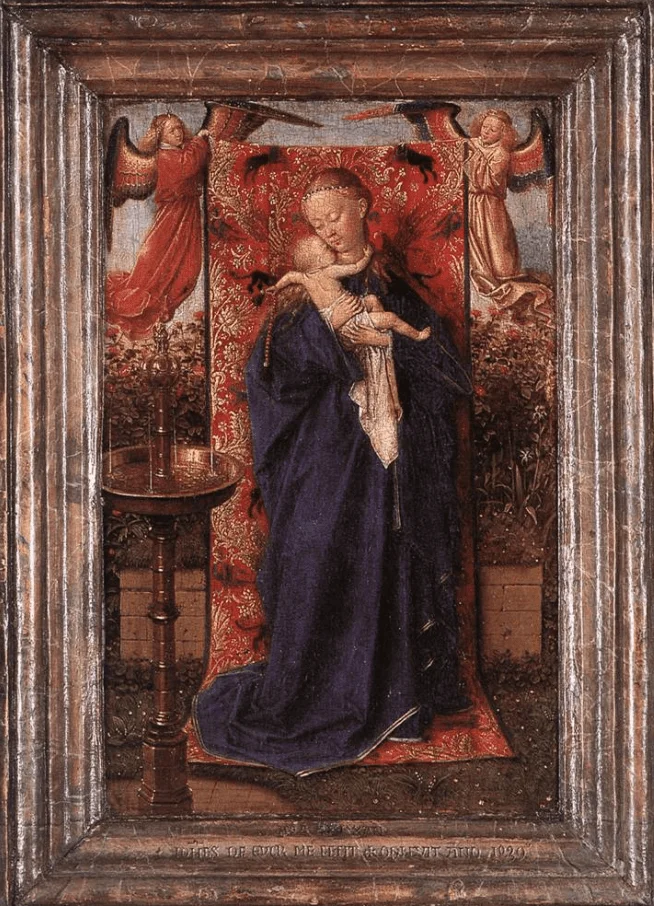
11. Lucca Madonna
- Date created: 1437
- Dimensions: 65.5 x 49.5 centimeters (25.7 x 19.4 inches)
- Location: Städel Museum, Frankfurt, Germany
The Lucca Madonna is another painting that was completed during the final years of the artist’s life. The composition makes art historians assume that this was the central panel of a triptych of which the outer panels have been lost.
It depicts the Virgin Mary who is seated on a wooden throne while she is breastfeeding her infant son Jesus Christ. Just like his other works, van Eyck included several religious symbols. The relatively small size of the work probably meant it was commissioned for personal devotion.
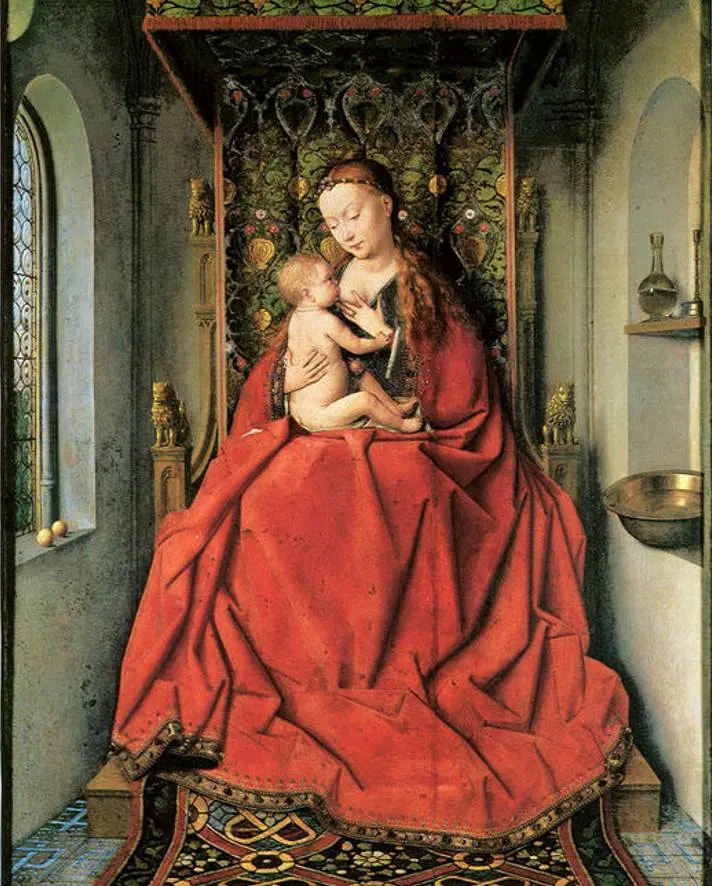
12. Madonna of Jan Vos
- Date created: 1441-1443
- Dimensions: 47 x 61 centimeters (18.5 x 24 inches)
- Location: Frick Collection, New York City, United States
The Madonna of Jan Vos is considered to be the final painting that Jan van Eyck ever worked on. It depicts a similar scene of the donor, in this case, a Carthusian monk named Jan Vos, kneeling in front of the Virgin Madonna while accompanied by two saints.
Jan Vos commissioned this painting just a few months before van Eyck passed away which means that he didn’t manage to complete it. Art historians assume he painted the central figures and laid the foundation of the other elements and a talented member of his workshop completed the work by 1443.
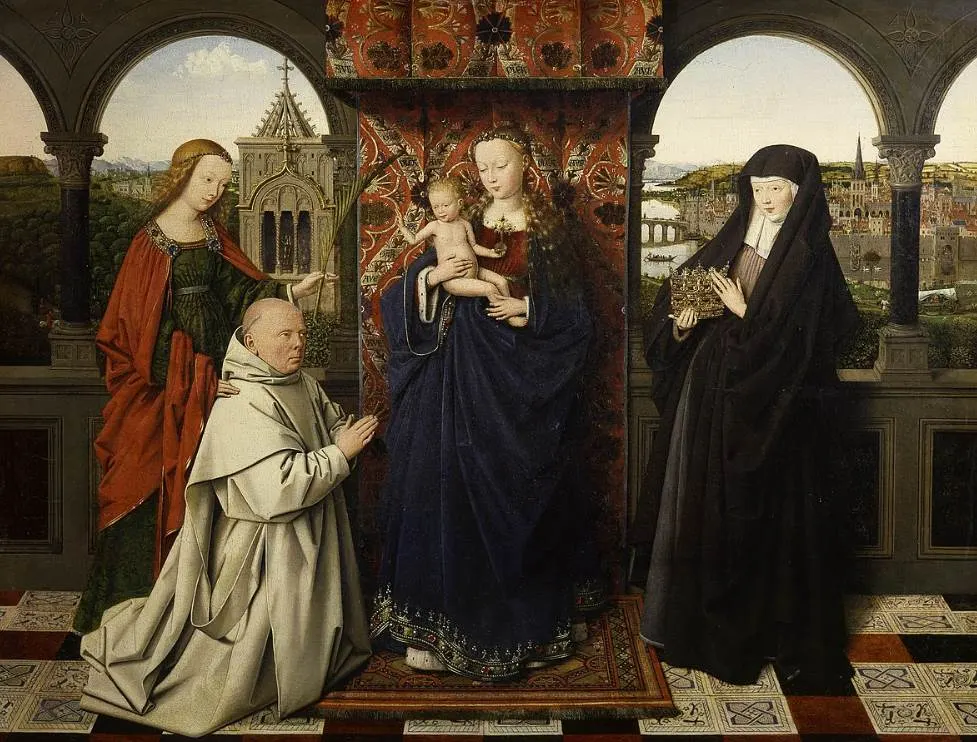
13. Madonna in the Church
- Date created: 1438-1440
- Dimensions: 31 × 14 centimeters (12 × 5.5 inches)
- Location: Gemäldegalerie, Berlin, Germany
The Madonna in the Church is probably one of the final Madonna paintings by Jan van Eyck. It’s another relatively small work that features an incredible level of detail. The subject of the Madonna and her child show signs of Italo-Byzantine influence.
They are placed within the interior of what is probably an imaginary Gothic church. This work is a testimony to the architectural knowledge that van Eyck possessed as he added a large number of Gothic elements and decorations. It was probably part of a diptych but the right panel has been lost over the centuries.

